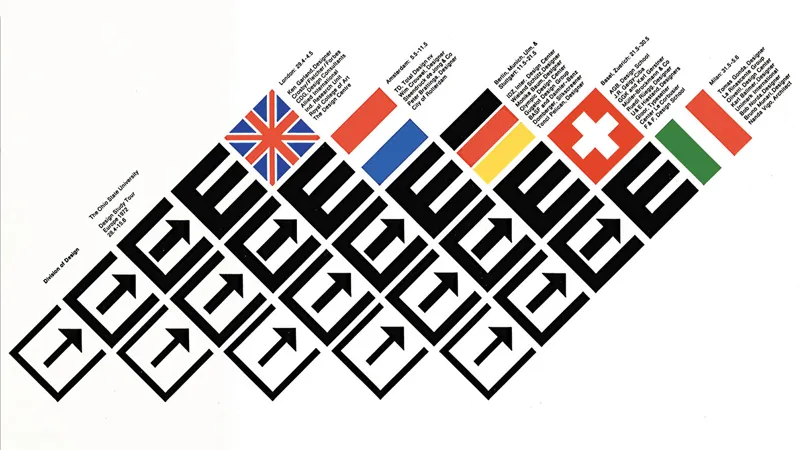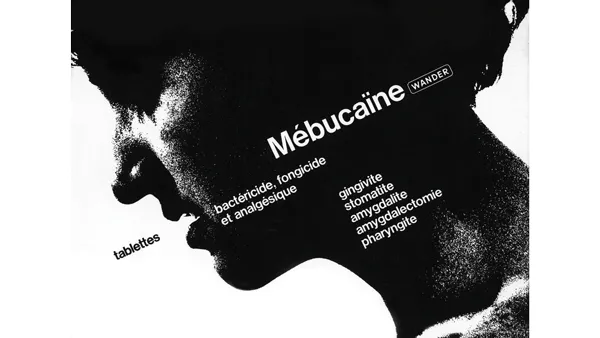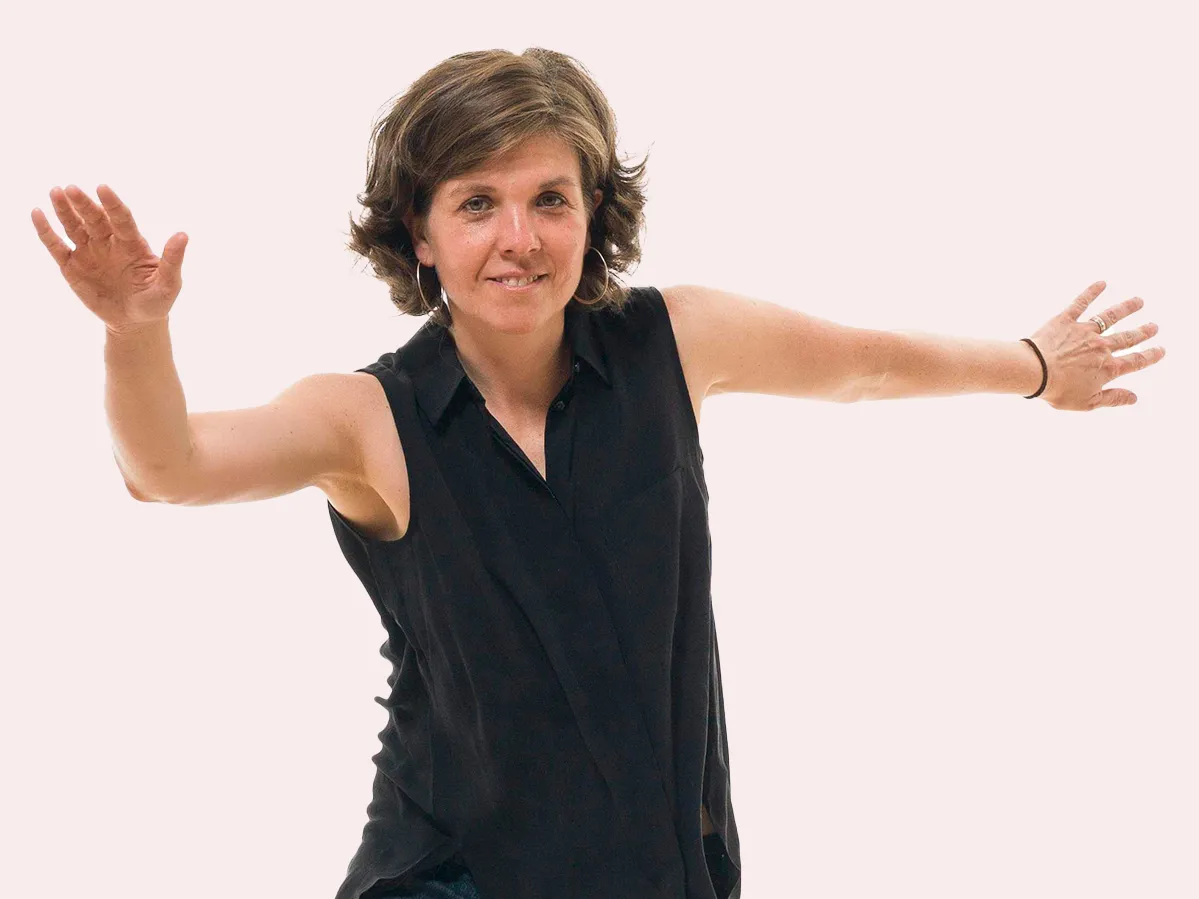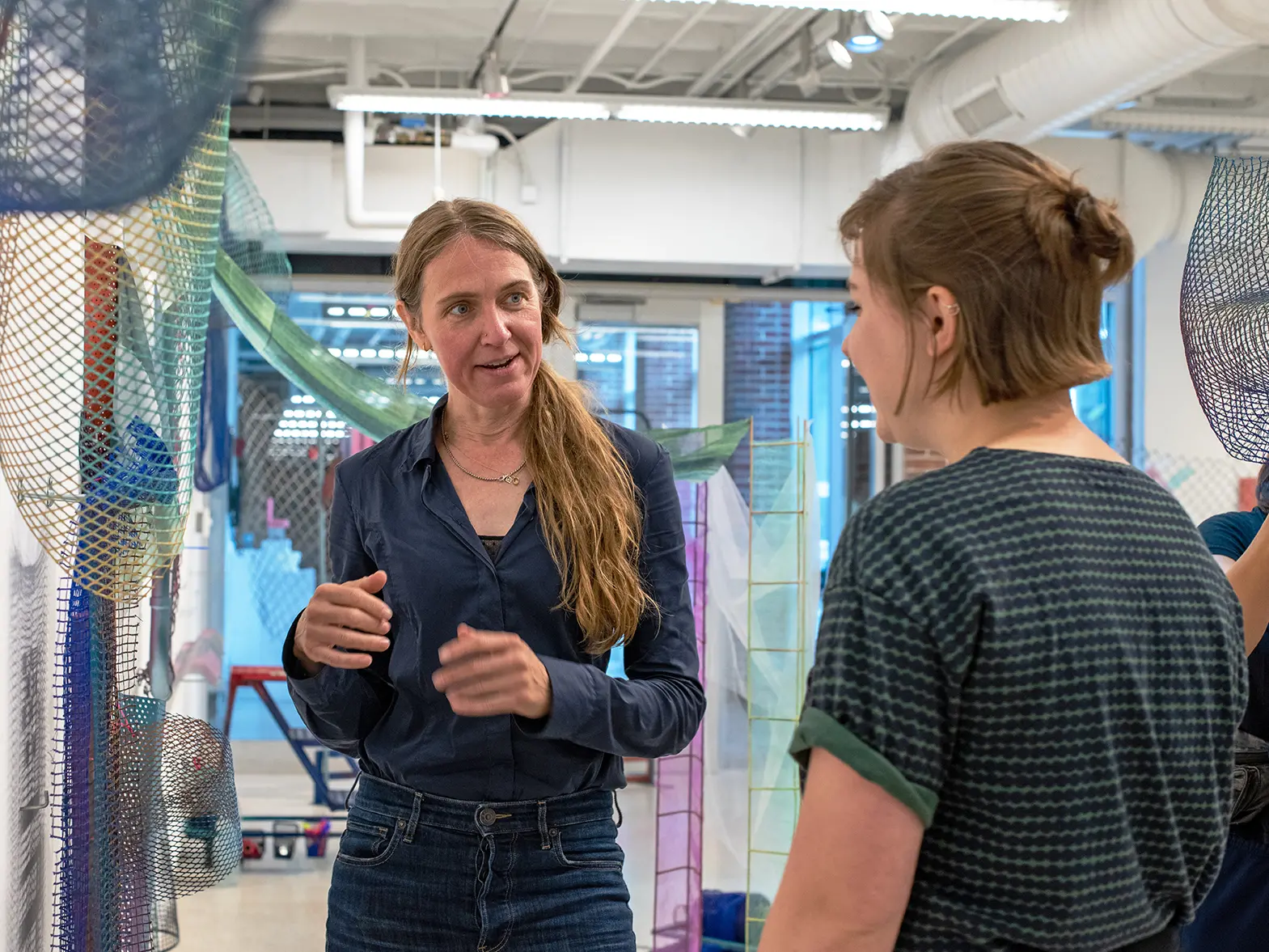For the people: Peter Megert was a design innovator
Department of Design faculty, staff and alumni put together an exhibition to celebrate the work and life of the influential artist and educator.

At Ohio State, Professor Peter Megert was admired for the Swiss design principles and user-focused design thinking he taught, as well as the way he interacted with and inspired people. (Photo by Roman Sapecki)
As a rookie in his first agency job in 1960, Swiss graphic designer Peter Megert was tasked with photographing an 8-foot-tall red capital letter M in typically Swiss locations. He lugged the Migros grocery chain logo to a snowy mountain and a rocky lakeshore in the making of the advertising campaign. In October, a doppelganger of that M will beckon visitors to an exhibition of Megert’s work on the Columbus campus.
Megert, a member of the Department of Design faculty from 1970 until his retirement in 1985 and an adjunct faculty member long after retirement, is being honored with an exhibition by former colleagues and students in the Department of Design. He died in 2022 at age 85. The show has been a labor of love, a scholarly archiving project and a journey of discovery for his friends and co-workers. Invited by Megert’s family, they sifted through the designer’s studio in the house shared by Peter and his wife, Ursula Megert, just north of campus.
If you go: Peter Megert Exhibition
When: Oct. 7–Nov. 8
Where: Hopkins Hall Gallery, 128 N. Oval Mall
More information: go.osu.edu/megertexhibit
“I have terrific admiration for him and his accomplishments as a designer. He was a very significant contributor not only to design but also to innovative teaching. He did so much but he was never a self-promoter,” says Oscar Fernandez, emeritus professor of design at the University of Cincinnati and a former faculty member at Ohio State. Fernandez met Megert in 1981. “As we’ve gone through this journey, saving these design artifacts, we find one more surprise after another. When did he do this? How come he never shared this with anybody?”
They conducted interviews with former students and colleagues, capturing stories about Megert’s gentle and constant manner of teaching and learning. They regaled one another with tales of good times with Peter and Ursula, who threw frequent dinner parties and boarded graduate students, especially those from abroad, in an apartment in their house on Oakland Avenue.
“They were kind of a comedy duo; they played off each other,” says Paul Nini, professor in the Department of Design and a longtime colleague of Megert’s. “They found coming to the United States to be a great adventure. They enjoyed the looseness and freedom America offered, America being a glorious mess.”
Ursula, an accomplished ceramist, died in 2022. Visitors to the exhibition will get to see her ceramics and stand alongside a life-size candid photo of the couple in conversation on their wedding day.
Born in 1937 in Switzerland, Megert attended art school there and pursued graduate studies in France and the United States. In 1968, he was recruited by legendary graphic designer Paul Rand (known primarily for corporate logo designs, including IBM, UPS, Enron and ABC) to Westinghouse Corporate Design Center, a short-lived but influential in-house design studio for architecture and industrial, interior and graphic design.
At Westinghouse, Megert worked on diverse projects such as Bay Area Regional Transit control systems, a deep-sea submarine and in-house print manuals and guides. One of those says “Emergencies” across concentric circles, each of which ticks a few centimeters ahead of the one adjacent in a disorienting display of urgency. Megert also used the interplay of type and motion in what would become his most famous work, a poster for the 1965 “Licht und bewegung” (Light and movement) exhibition at the Kunsthalle Bern art gallery in Switzerland. On the poster, ghostly text grows incrementally more solid line by line (the light) while also shimmying with horizontal misalignment (the movement).
These are a few of the products you can see in the Hopkins Hall exhibition. They are arresting in and of themselves. The show’s organizers have added ample context—facts about design history and theory, the evolving study of design at Ohio State, and national and world history—to demonstrate how Megert’s work was made in relation and reaction to many variables.
Megert was an early adopter and teacher of critical design thinking, challenging himself and other designers to consider the needs of the user, to get into that person’s mind and world and empathize with them, Fernandez says. From empathy, Megert knew, came great design. This was a radical departure from prevailing attitudes of the time, though user experience has become its own field of study today.
“Common sense alone didn’t do it anymore,” Fernandez says. “He believed in systems thinking, being more holistic about the variables and factors in visual communication design. He always did it in a quiet way. He never was a preacher. He would do these lessons, not only in the classroom but walking down the street or having dinner at a party, he’d make a lesson about something.”
Megert’s legacy lives in the practice of his fellow designers, fellow teachers and his students. “I think of him often when I consider ‘how do you approach a problem?’ I think in my designs I always leave a little bit of humanity. I get that from Peter. I’ve got stacks of stuff that he’s designed, and I have to say, ‘thanks, Peter,’ or ‘gracias, Pedro,’” Fernandez says. “I think working on this exhibition has brought that to light. I can hear him speaking in his designs.”
Make a difference
A gift to the Peter Megert Design Fund supports this exhibition and funds a scholarship for Ohio State students studying design.






